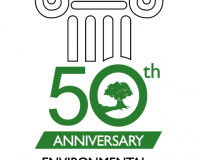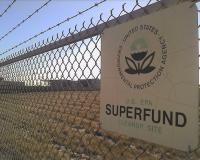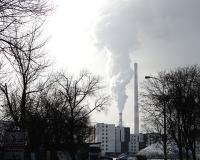
Vibrant Environment
Governance And Rule Of Law
All | Biodiversity | Climate Change and Sustainability | Environmental Justice | Governance and Rule of Law | Land Use and Natural Resources | Oceans and Coasts | Pollution Control

In the 1960s, a time of extreme air and water pollution across America, governments manifestly were failing to sustain a healthy environment. The conservation victories of the late 19th century and of the Progressive era in the 1920s had proven to be necessary but not sufficient. In April of 1965, the Conservation Foundation (CF) scoped out the growing threats to the North American environment with a conference at Airlie House just outside of Washington, D.C. Clearly, policies and laws were lacking.

In recent years, “competitive federalism” between U.S. states and the federal government has spread to encompass environmental regulation. After EPA issued the Clean Power Plan in 2015, more than one-half of the states filed lawsuits alleging that EPA’s plan encroached upon state authority to determine energy policy. Between 2009 and 2017, Texas alone sued the Obama Administration at least 48 times, many of those suits over EPA action regarding air and water quality standards. While the pollution control laws passed in the 1970s were founded upon “cooperative federalism,” competitive federalism has resulted in a zero-sum rhetoric that pits environmental protection against economic growth.

I have a confession: I can’t stand the “what’s your occupation” question—credit card applications, cocktail parties, whatever. I find it limiting and often irrelevant. Truth be told, I haven’t known how to answer the question for years. “Environmental, Health, and Safety Executive?” “Sustainability Leader?” “ESG Champion?” The reality is that my default answer has become “recovering environmental lawyer” but I worry that’s insensitive . . . !

Elephants are amazing animals and perhaps our most enduring mental image of Africa—large, untamed, inexhaustible. That image can also distract us from the unpleasant historical and current realities of colonization and exploitation of Africa and Africans, including African elephants. Evidence of this is like air, it’s all around us. So, like air, it goes unseen, like the fresco above the south entrance to the Federal Trade Commission building, here in Washington, D.C., portraying an obviously western man, extending a money bag to an apparently African man, who is on bended knee and holding an ivory tusk.

First plastic bags, then straws, and now . . . miniature toiletries.
In a world where half the plastic produced globally is packaging we use just once, and only nine percent of all plastic is recycled, a consumer tide against single-use plastics is sweeping up grocery retailers, restaurants, and now the hospitality industry.

I’ve conducted research on global climate change and on nuclear waste disposal, but vapor intrusion (VI) is the most challenging topic I’ve worked on during my 40-year career. VI’s technical challenges relate to its multimedia nature and the need to understand pollutant fate and transport both above and below ground.

50-year celebrations typically feature nostalgic reminiscings about a great run, as with golden wedding anniversaries, or a gauzy look back at a humble beginning for a now-mature organization.
The Environmental Law Institute’s 50th year celebration is different.

Judges rely on precedential case law and legal interpretation in issuing their decisions, but with an increasing number of court cases relying on scientific evidence, judges must also understand the science to ensure a sound judicial process. Accurately deciding such cases not only determines the case at hand, but could set the precedent for similar cases in the future.

Last month, the New York Times reported that the Trump Administration began drafting a new rule that could eviscerate one of the most powerful tools available to U.S. citizens to hold the government accountable for environmental harm. The new rule, if finalized, would prevent concerned citizens from filing cases with the U.S. EPA Environmental Appeals Board (EAB), as well as inherently change EPA’s appeals process and undermine enforcement of environmental law throughout the country.

In 1974, I was a trial lawyer with Cummings & Lockwood in Stamford, Connecticut, with a lifelong interest in the environment. EPA had been recently created, Congress had just passed two new laws to protect air and water quality, and President Kennedy had made service in the federal government a noble calling.